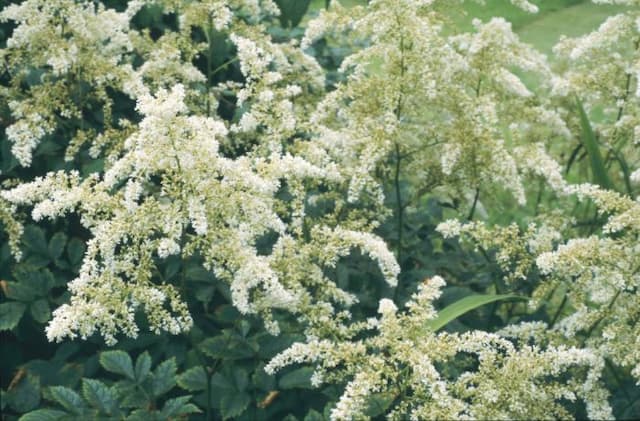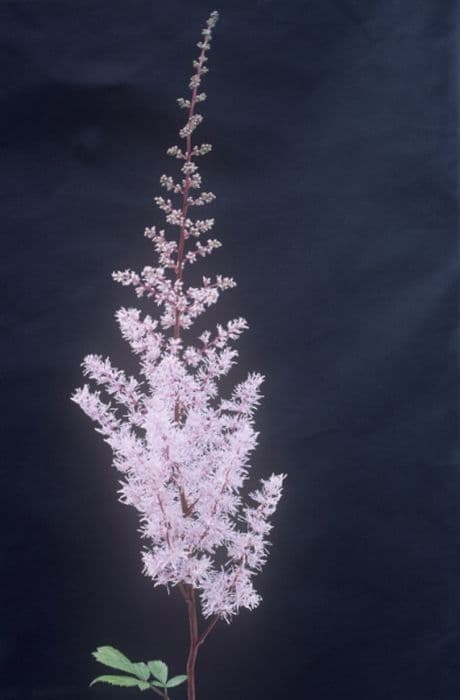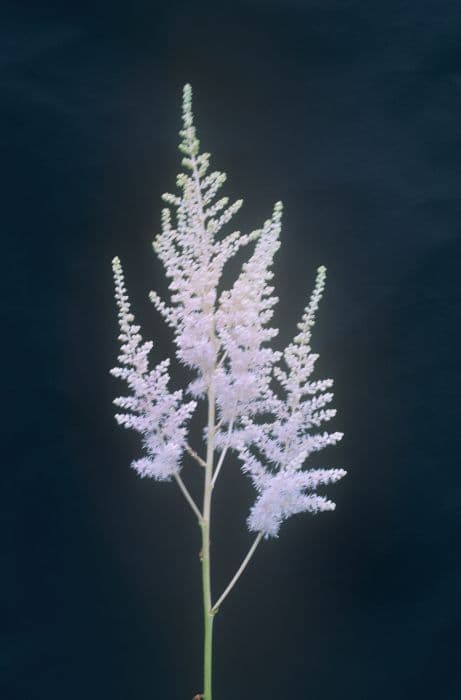Alum root 'Ginger Ale' Heuchera 'Ginger Ale' (PBR)

ABOUT
'Ginger Ale' is a mound-forming perennial spreading to 40cm with large, lobed leaves of varying colours. Leaf colours range from golden-yellow to yellow-brown flushed with pink and green and overlaid with a silvery sheen. In summer, sprays of small pink and yellow flowers are borne above the foliage on dark-pink stems
About this plant
 Names
NamesFamily
Saxifragaceae
Synonyms
Coral Bells, Alumroot
Common names
Heuchera 'Ginger Ale' (PBR).
 Characteristics
CharacteristicsLife cycle
Perennials
Foliage type
Evergreen
Color of leaves
Mixed
Flower color
Mixed
Height
1-2 feet (30-60 cm)
Spread
1-2 feet (30-60 cm)
Plant type
Herb
Hardiness zones
4-9
Native area
North America
Benefits
 General Benefits
General Benefits- Attractive Foliage: Heuchera 'Ginger Ale', commonly known as Coral Bells, has unique ginger to amber-colored leaves that add a warm color palette to gardens and landscapes.
- Seasonal Interest: It offers year-round interest with its evergreen foliage in milder climates, and its leaf color can intensify in the cooler months.
- Low Maintenance: Coral Bells are easy to care for, requiring minimal upkeep once established, which makes them suitable for a variety of gardeners.
- Drought Tolerance: Once established, they have moderate drought tolerance, making them a good fit for water-wise gardens.
- Shade Tolerant: They grow well in a range of light conditions, including partial shade, which allows them to thrive in spots where other plants might struggle.
- Compact Growth: With its mounded habit, it is ideal for borders, containers, and small garden spaces, allowing for versatile design use.
- Attracts Pollinators: Coral Bells can attract butterflies and hummingbirds, which benefits the local ecosystem and adds life to the garden.
- Deer and Rabbit Resistant: Its textured foliage is generally less palatable to deer and rabbits, reducing the likelihood of damage from these animals.
- Mixing and Matching: The variety of Heuchera makes it easy to mix with other plants to create interesting and contrasting textures and colors in garden designs.
- Non-Invasive: Coral Bells are non-invasive, making them a responsible choice for maintaining the balance of local flora.
 Medical Properties
Medical PropertiesThis plant is not used for medical purposes.
 Air-purifying Qualities
Air-purifying QualitiesThis plant is not specifically known for air purifying qualities.
 Other Uses
Other Uses- Leaf Print Making: The uniquely patterned leaves of Coral Bells can be used for creating beautiful leaf prints on fabric or paper, providing a natural and artistic element to crafts.
- Themed Garden Design: Coral Bells, with their varied foliage color, can be used to create a splendid 'Ginger Ale' themed garden, reflecting the color palette of the beverage.
- Photography: The textured and colorful foliage makes Coral Bells an excellent subject for macro photography, helping photographers to capture the intricacies of plant life.
- Culinary Garnish: Although not commonly consumed, the flowers of Coral Bells can be used as an ornamental garnish for desserts and drinks that match their aesthetic appeal.
- Fairy Gardens: Because of their miniature and delicate appearance, Coral Bells can be incorporated into fairy gardens to create a whimsical landscape design.
- Seasonal Decorations: The leaves of Coral Bells can be included in autumnal arrangements and wreaths, contributing their rich, warm hues to seasonal decor.
- Container Gardening: Coral Bells can be used to create vibrant container gardens on patios or balconies where ground planting isn't possible, adding lush foliage to these spaces.
- Wedding Decor: Coral Bells can be used in flower arrangements or as part of the table settings to provide a rustic and elegant touch to wedding decor.
- Art Supplies Organization: Smaller Coral Bells plants can be used to organize and decorate spaces, such as holding paint brushes or pencils in a creative workspace.
- Teaching Tool: The diverse range of leaf colors and patterns makes Coral Bells an excellent resource for teachers when explaining plant variation and genetics in biology classes.
Interesting Facts
 Feng Shui
Feng ShuiCoral Bells are not used in Feng Shui practice.
 Zodiac Sign Compitability
Zodiac Sign CompitabilityCoral Bells are not used in astrology practice.
 Plant Symbolism
Plant Symbolism- Resilience: Heuchera, commonly known as Coral Bells, symbolizes resilience due to its ability to thrive in a variety of conditions and bounce back from environmental stress.
- Versatility: The diverse range of foliage colors and adaptability to different garden settings highlights its symbolism for versatility and flexibility in life.
- Long-lasting love: As a perennial, returning year after year, it can represent enduring affection and a long-lasting relationship.
- New Beginnings: The perennial nature of Coral Bells also signifies new beginnings and fresh starts, as it re-emerges with vigor each spring.
- Joy: The light and bright coloration of the 'Ginger Ale' variety, resembling the bubbly beverage, may symbolize joy and celebration.
 Water
WaterCoral Bells should be watered regularly to maintain moist, but not soggy, soil. It's best to water them deeply once a week, providing about 1 inch of water each time. During hot, dry periods, you may need to water them more frequently, especially if they are planted in containers. Avoid overhead watering to prevent disease, and instead water at the base of the plant. Adjust your watering to account for rainfall and check the soil before watering to ensure it has begun to dry out.
 Light
LightCoral Bells thrive in conditions with partial shade, although they can tolerate morning sun followed by afternoon shade. They should be protected from the harsh afternoon sun, which could scorch their delicate leaves. A spot that offers dappled sunlight throughout the day is ideal, which replicates their natural woodland habitat.
 Temperature
TemperatureCoral Bells are generally hardy and can withstand a range of temperatures, but they grow best when daytime temperatures are between 60°F and 75°F. They can survive temperatures as low as -25°F to -30°F, but ideally should not be exposed to prolonged periods of extreme cold. During the summer, they can handle temperatures up to 80°F, but they should be shaded from intense heat.
 Pruning
PruningCoral Bells should be pruned to remove any dead or damaged foliage and to promote a tidy appearance. The best time for pruning is in the spring, as new growth begins to appear. Trim back the old leaves to make room for new ones. Pruning can also be done throughout the growing season as needed to maintain the plant's shape and health.
 Cleaning
CleaningAs needed
 Soil
SoilCoral Bells (the common name for Heuchera 'Ginger Ale') thrive in a well-draining soil mix that's rich in organic matter. A mix of two parts garden soil, one part peat moss or coco coir, and one part perlite or sand is ideal. The soil pH should be slightly acidic to neutral, ranging from 6.0 to 7.0.
 Repotting
RepottingCoral Bells should be repotted every 2 to 3 years to replenish soil nutrients and to accommodate root growth. Repotting is also an opportunity to divide the plant if it has become too large for its container.
 Humidity & Misting
Humidity & MistingCoral Bells prefer moderate humidity levels but are quite adaptable to different humidity conditions. They typically do well in average home humidity levels. If the air is too dry, especially during winter indoor heating, a pebble tray or occasional misting can help.
 Suitable locations
Suitable locationsIndoor
Place Coral Bells in bright, indirect light and maintain consistent moisture for optimal growth.
Outdoor
Plant Coral Bells in partial shade with good drainage and protect from harsh sun.
Hardiness zone
4-9 USDA
 Life cycle
Life cycleHeuchera 'Ginger Ale', commonly known as Coral Bells, begins its life cycle as a seed, which upon germination grows into a small seedling. The seedling develops into a mature plant with a clump-forming habit, showcasing its ornamental foliage that varies from amber to ginger-colored leaves. During spring and early summer, Coral Bells produce delicate flower stalks that rise above the foliage, adorned with small, bell-shaped flowers. After pollination, these flowers can produce seeds which may fall to the ground and germinate to produce new plants. The plant is a perennial, which means it can survive for several years, going through periods of active growth in spring and summer, followed by dormancy in fall and winter. Over time, clumps may grow dense and can be divided in spring to maintain vigor and propagate the plant.
 Propogation
PropogationPropogation time
Spring-Early Summer
The most popular method to propagate Heuchera 'Ginger Ale', commonly known as Coral Bells, is by division. This method is typically carried out in the spring or fall when the plant is not in active growth. To propagate by division, carefully dig up the plant and gently separate it into smaller sections, ensuring each section has a part of the root system attached. These divisions can then be immediately replanted into a well-draining soil mix, and it's essential to keep them watered until they are established. This technique is favored because it maintains the characteristics of the parent plant and allows gardeners to rapidly increase their stock.









